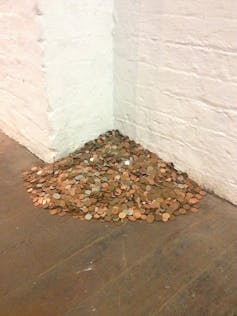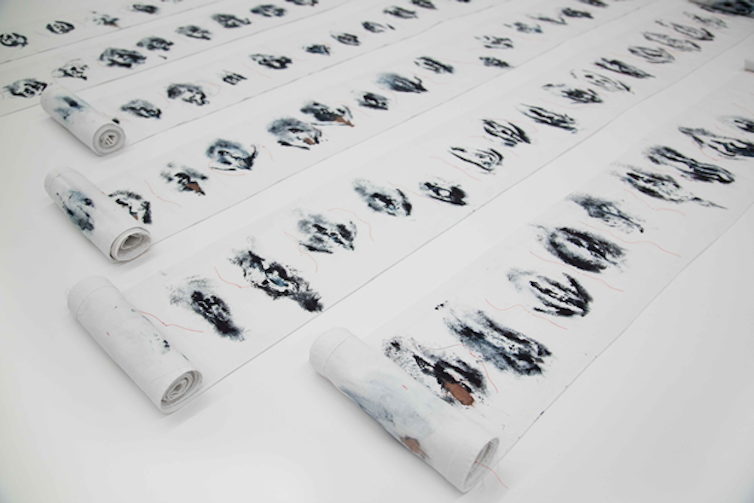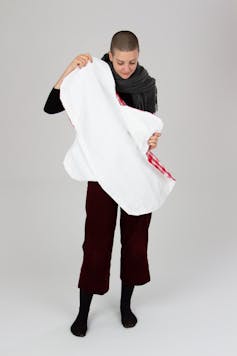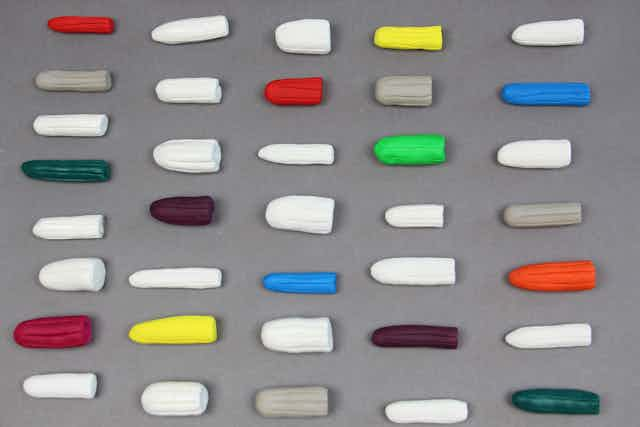A series of sculpted clay tampons; body prints made with acrylic paint and menstrual fluid; photographs of menstrual experiences in Nepal. These are just some of the artworks we are exhibiting at our upcoming show, alongside magazines from our univerity’s Femorabilia Archive. We are both academics working on menstrual stigma. The exhibition aims to provide a snapshot of the diverse ways menstruation is represented in art.
Cultural stigma about menstruation is found globally, manifesting in many different ways. These include period poverty in the UK and exclusionary and discriminatory practices all over the world. There is a growing body of work on addressing menstrual stigma, with global activist communities increasing debate in the public and political realms.

While it is important to highlight the issues that those who menstruate face, focusing on stigma and taboos can be counter-productive. By continuing to repeat these negative ideas, we risk reinforcing the very stigmas and exclusionary practices that organisations such as The Real Period Project and Chella Quint’s #periodpositive campaign are trying to challenge through educating people of all ages and genders about the menstrual cycle.
But art can be a powerful means to confront and subvert stigma around menstruation. Art can present alternatives to the expected everyday presentation of periods we see in medical texts, advertising and pop culture. In these areas, the menstrual cycle tends to be framed as an unchanging standardised pattern. Periods themselves are portrayed as inconvenient at best, and often something to be embarrassed by.
The 2017 Bodyform “Blood Normal” campaign was the first advert to depict menstrual blood. It was seen as groundbreaking, but seems more of a marketing strategy than a genuine representation of an ordinary bodily function.
Menstruation is an everyday occurrence that is experienced differently by each person.
Menstrala
Menstrual art (sometimes called Menstrala, a term coined by the artist Vanessa Tiegs) has a long history. In the 1970s, radical feminist artists such as Judy Chicago made works like Red Flag (1971), a photolithograph of the artist removing a bloodied tampon from her vagina.
Then there’s more more recent work such as Jen Lewis’ Beauty in Blood (2015), macro photographs of her collected menstrual blood. Or that of the artist and poet Rupi Kaur, who was banned (and swiftly unbanned) from Instagram in 2015 for her posts showing menstrual blood and everyday menstrual experiences.
These works subvert and challenge representations of menstruation in the media and popular culture by showing the ordinariness of this bodily function.
Menstrual artworks make the invisible visible. These artworks show us what taboo demands we hide and enable the realities of bleeding to be shared on a public platform. It is tempting to locate the power of menstrual art as a celebration of periods. But this superficial view can also contribute to maintaining rigid gender stereotypes and ideas about who has periods, rather than changing them, suggesting that the ability to menstruate is an essential part of being a woman.
Menstrual artworks have much more power if understood as being revelatory. They open spaces of resistance to expected norms and behaviours, revealing what is usually hidden. Artists working with periods present their blood, bodies, and experiences on their own terms, rather than those given to us by society.

One of us – Bee – researches and creates artwork about menstruation. The work is informed by examining the language of online medical advice, such as that provided by the NHS. It also draws on personal experiences with a painful, inconsistent menstrual cycle. Cycles (2016-17) (pictured above) captures the idiosyncratic rhythm of the artist’s body, its shifting forms and bodily fluids. It is a document of a changing menstrual cycle. The work is a direct and public challenge to the stigma of menstruation as well as the notion that all periods conform to the medical textbooks.
Global art

Such art – that aims to challenge restrictions and to reframe discussions around menstruation – is found all over the world. Poulomi Basu’s A Ritual of Exile: Blood Speaks, for example, explores exclusionary rituals and practices in Nepal. She uses immersive virtual reality to evoke emotions and to turn audiences into activists.
Chilean artist Carina Ubeda, meanwhile, transformed her usually discarded bloodstained menstrual cloths into a visually arresting installation, Cloths (2013), which suggests themes of time, memory and women’s work by including sewing materials.
Art plays an important role in promoting a radical alternative view of menstruation, which reflects the bloody realities of menstruation and presents a range of experiences. It’s important that space is created to show and share these responses to menstruation outside the polished, sanitised visual narratives of the menstrual product industry.

